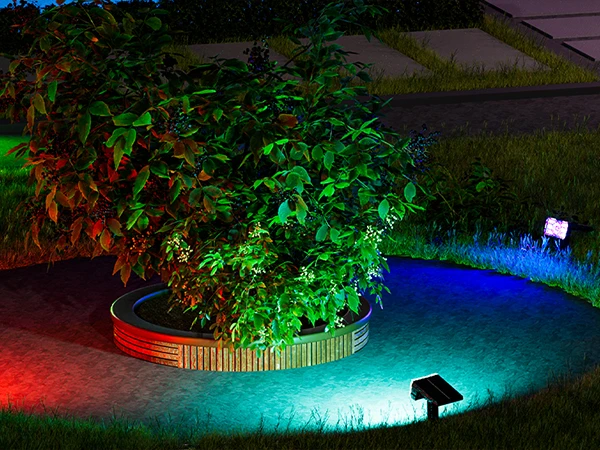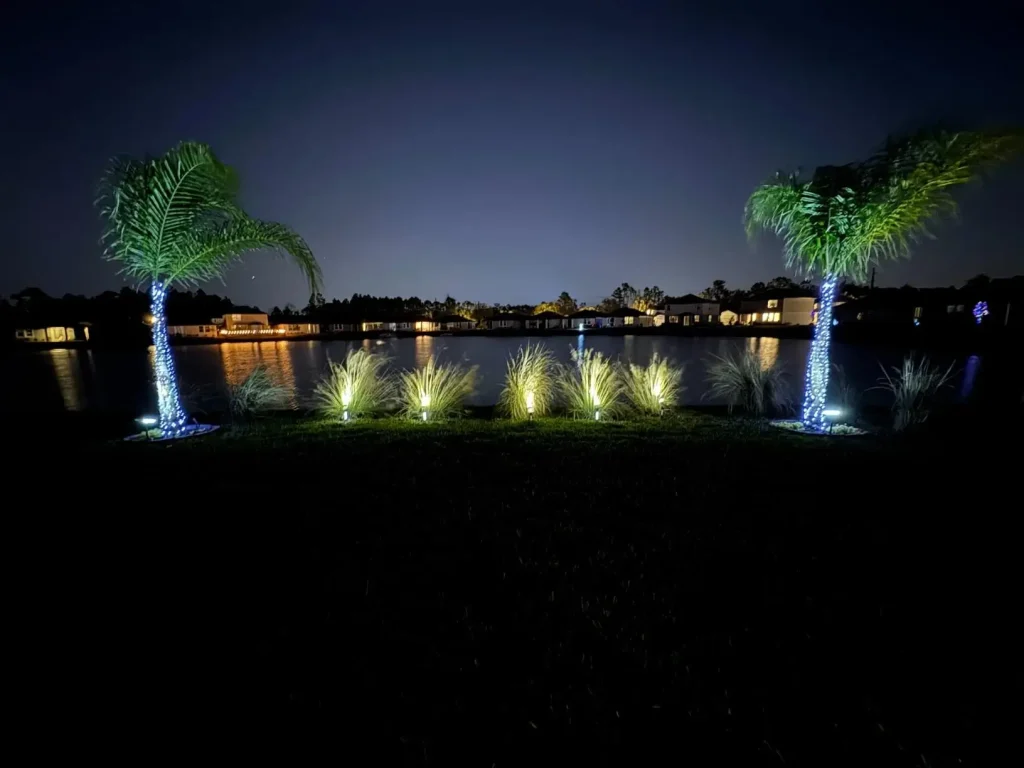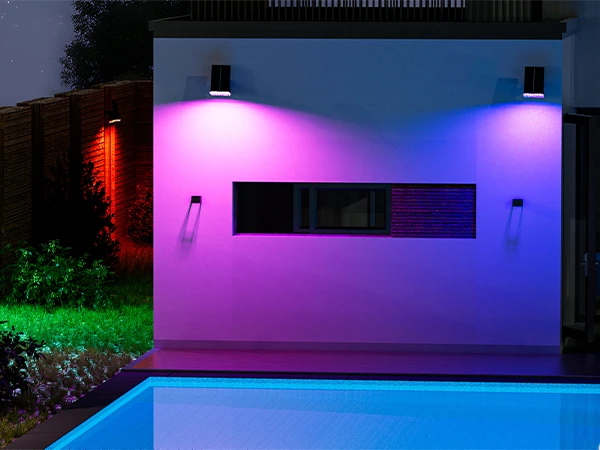Solar spotlights, as efficient and eco-friendly lighting solutions, are widely used in gardens, parks, and landscapes, enhancing nighttime environments. They consist of key components: the solar panel, battery, LED beads, controller, and lamp housing, each playing an indispensable role in the system.

Solar Panel: The Energy “Collector”
The solar panel is a core component of solar spotlights, converting sunlight into electrical energy to power the system. Different types of solar panels vary in conversion efficiency, with monocrystalline silicon panels favored for their high efficiency. For instance, Bitpott’s solar spotlights use monocrystalline silicon panels that efficiently convert sunlight into electricity under ample sunlight. Tom, living in the suburbs, installed Bitpott solar spotlights in his garden. On sunny days, the panels quickly collect and convert solar energy, storing it for nighttime use. Tom observed that even on cloudy days, the panels capture enough energy to keep the spotlights operational for a period at night.
Battery: The Energy “Storage”
The battery is responsible for storing electrical energy in solar spotlights. After the solar panel converts sunlight into electricity, the battery stores excess energy for use at night or during low-light conditions. Common battery types include lead-acid, nickel-metal hydride (NiMH), and lithium batteries, with lithium batteries becoming the mainstream choice due to their high energy density and long cycle life. Bitpott solar spotlights feature lithium batteries that store energy efficiently and have a prolonged lifespan. Emma, who lives in a city villa, installed Bitpott solar spotlights. Even after years of use, the batteries maintain excellent performance, providing stable power to keep her garden brightly lit at night.
LED Beads: The “Creator” of Light
LED beads are the key to the lighting function of solar spotlights, converting stored electrical energy into light to illuminate the surroundings. LED beads offer high luminous efficiency, long lifespan, and energy savings. Different colors and brightness levels cater to various lighting needs. For example, warm yellow LED beads are often used in park landscapes to create a cozy ambiance, while brighter white LED beads are used in areas requiring enhanced safety, such as steps or pathways. Bitpott’s solar pathway lights, for instance, use LED beads that emit clear, bright light, effectively illuminating paths and ensuring safe nighttime walking. Lucy, from a small town, installed Bitpott solar pathway lights along her garden path. The light not only brightens the path but also adds a warm ambiance to her garden.

Controller: The System’s “Commander”
The controller regulates and manages the solar spotlight system. It automatically controls the spotlight’s on/off function based on light intensity, preventing unnecessary operation during daylight to save energy. Additionally, the controller manages the battery’s charging and discharging processes, protecting against overcharging or over-discharging to extend battery life. During intense summer sunlight, the controller adjusts the charging current to ensure safe battery charging. Bitpott solar spotlights feature intelligent controllers that precisely manage the spotlight’s operation based on ambient light and battery levels. David, a gardening enthusiast, installed Bitpott solar landscape lights in his garden. The controller’s smart regulation ensures the lights turn on and off at the right times, saving energy while creating a stunning nighttime garden display.
Lamp Housing: The Protective “Armor”
The lamp housing protects the internal electronic components. Since solar spotlights are typically installed outdoors, they must withstand harsh conditions like wind, rain, and sun exposure. Thus, the housing requires excellent waterproof, dustproof, and corrosion-resistant properties. Bitpott solar spotlights use durable materials for their housing, boasting high waterproof ratings to resist rain erosion. The housing design balances aesthetics and functionality, protecting internal components while blending with the environment. Jack, living in a coastal area, installed Bitpott solar garden lights. Despite exposure to sea breezes and humid air, the housing remains intact, safeguarding internal components and providing consistent lighting.
Conclusion
In summary, the components of solar spotlights—solar panel, battery, LED beads, controller, and lamp housing—each play unique and vital roles. Working together, they deliver efficient, eco-friendly, and aesthetically pleasing lighting. Bitpott’s solar lighting products, with their meticulous design and high-quality materials, maximize the performance of each component, meeting diverse user needs across various scenarios and making them an ideal choice for creating beautiful nighttime environments.

Comments